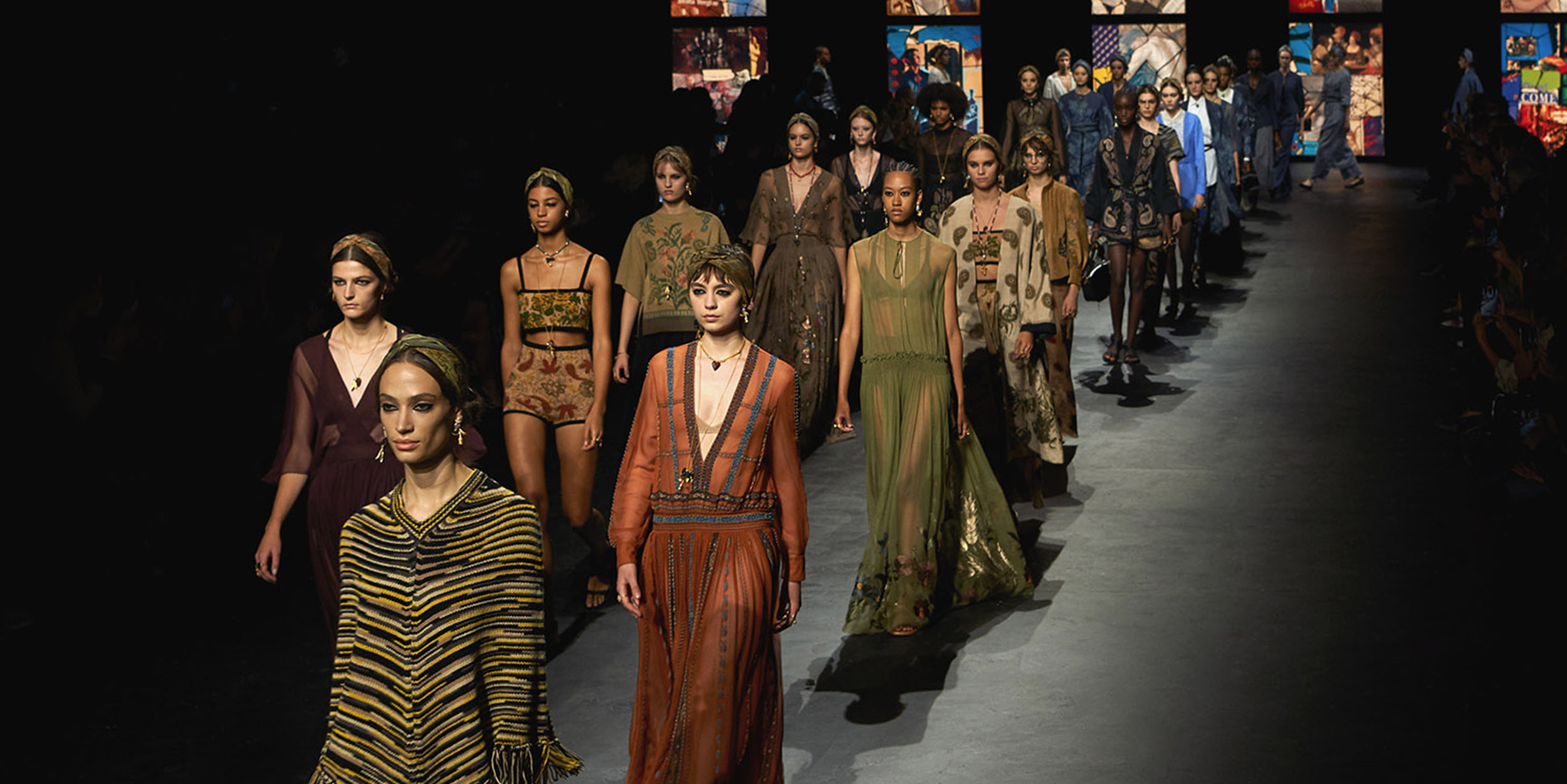Dior has us worshipping at the altar of earth tones
Presented to a socially distanced audience in a tent in the Jardin des Tuileries, her collection was—rest assured—a far cry from the cashmere track tops and cocktail earrings of “Zoom dressing,” but a study in how one might adapt the tailored silhouette of Christian Dior (hardly your kick-back-and-relax type of kit) to a comfy new wardrobe sensibility. “This is very far from the Dior look, because Dior was a couture house. The idea of construction was really stiff,” Chiuri acknowledged. “The most important issue for me was to realize the new Dior silhouette: the jacket with the shirt and the pants. I think that is what really represents the feeling of the moment. I cross my fingers.”
Tapping filmmaker Alina Marazzi and artist Lucia Marcucci, Maria Grazia Chiuri's latest presentation is a celebration of comfort, introspection, and feminine cultural power
Reflection has been a buzzword this year. For Dior’s Maria Grazia Chiuri, this season, the focus was on creating a cohesive, engaging narrative for her moments of reflection. Wearing her influences on her sleeve—from Italian filmmakers to 19th-century painters—she created a small world that acted as a window into her psyche.
Dior’s Spring/Summer 2021 collection featured many floral prints, leather vests, flowy dresses, and sheer fabrics. The styles weren’t confined to one occasion: there was everything from reworked men’s dress shirts and braided belts, to more casual wear, like the kimono style jackets.

The soundtrack to the show was an ensemble of 12 female singers from the ensemble Sequenza 9.3, who punctuated the show with fierce, visceral vocals as the models walked the runway. Chiuri envisioned the presentation as an “installation,” a series of artistic elements coming together to form a multifaceted project. Another source of inspiration for Chuiri was Alina Marazzi, an Italian filmmaker popular for her documentaries on the female condition, such as Vogliamo Anche le Rose (or “We Want Roses Too”), which examined the sexual revolution of the late ’60s.
The show is in many ways an examination of the trajectory of feminine virtue through various eras of fashion and art and achieves its purpose, unconventionally and compellingly, through a blend of multiple mediums of self-expression coupled with a renowned fashion designer’s intricate, tasteful eye.
Read more here







No comments:
Post a Comment